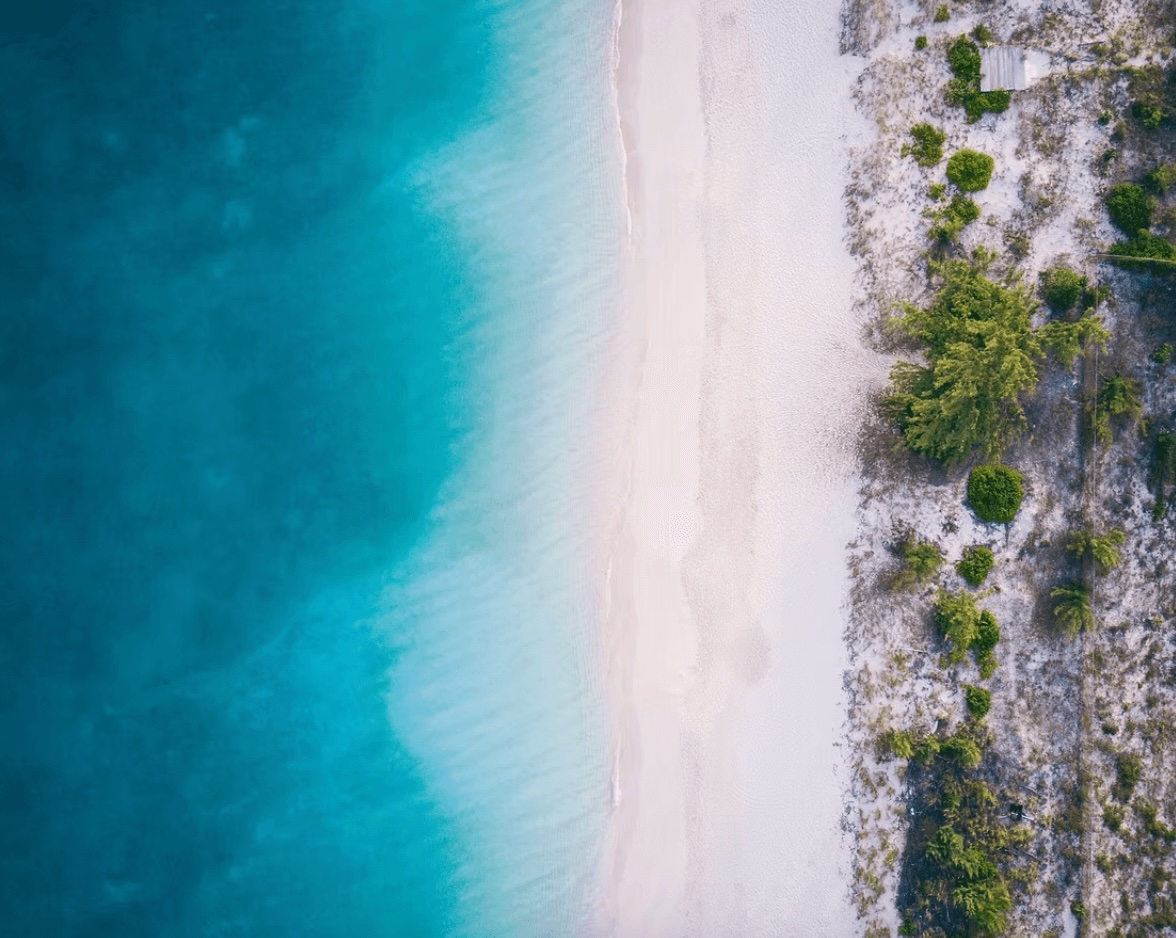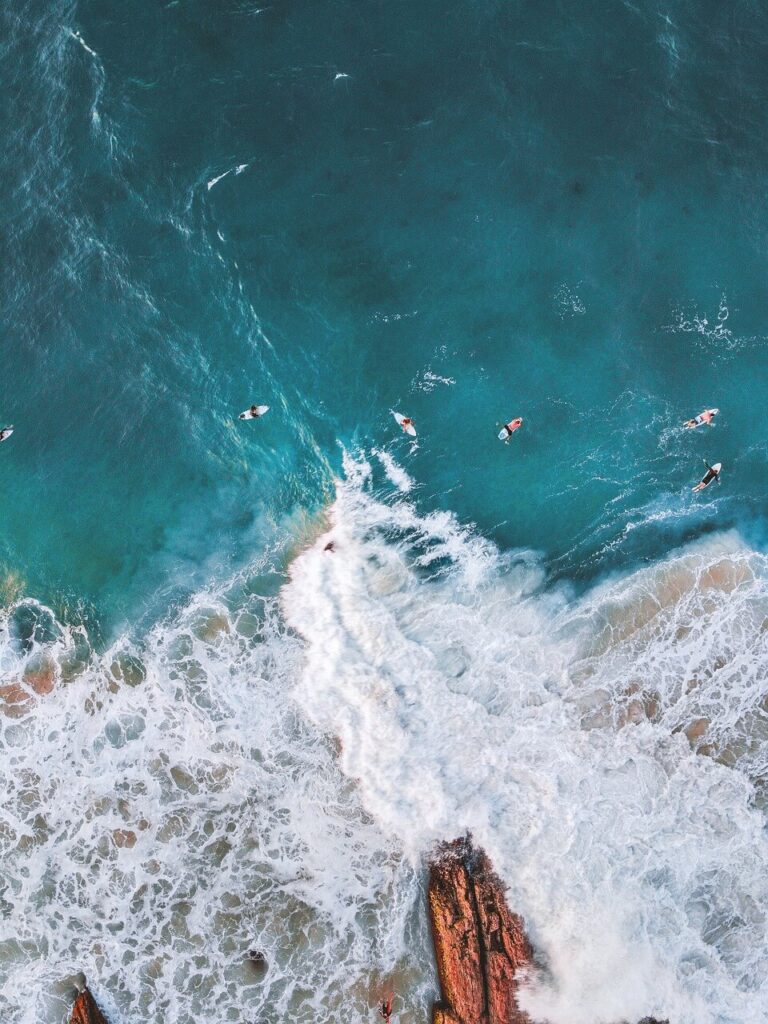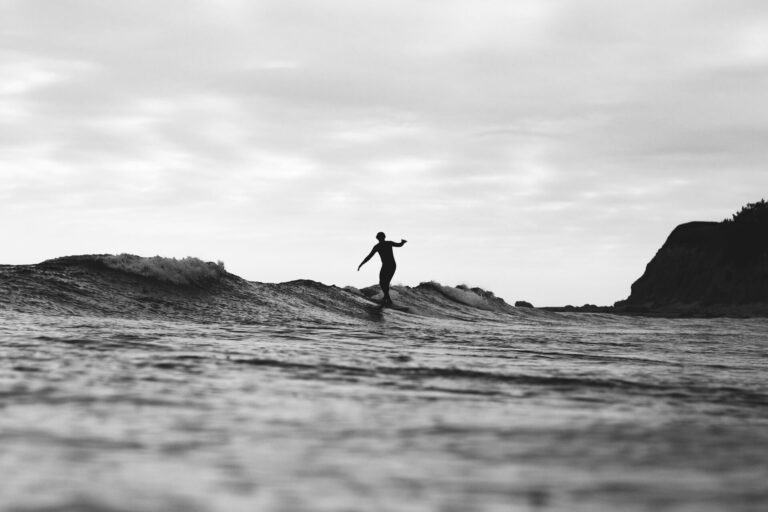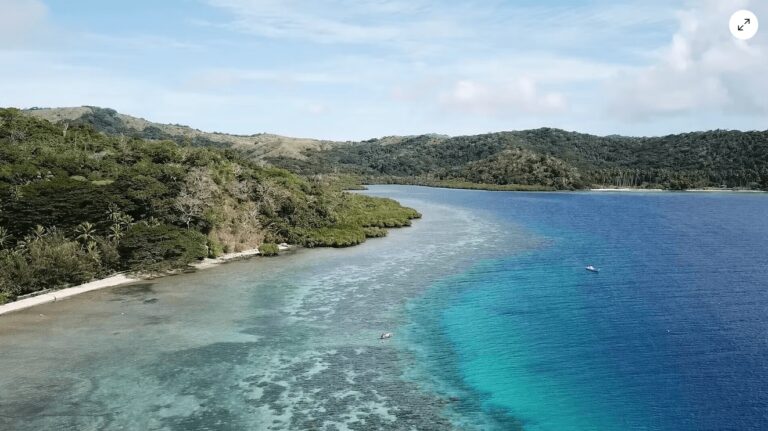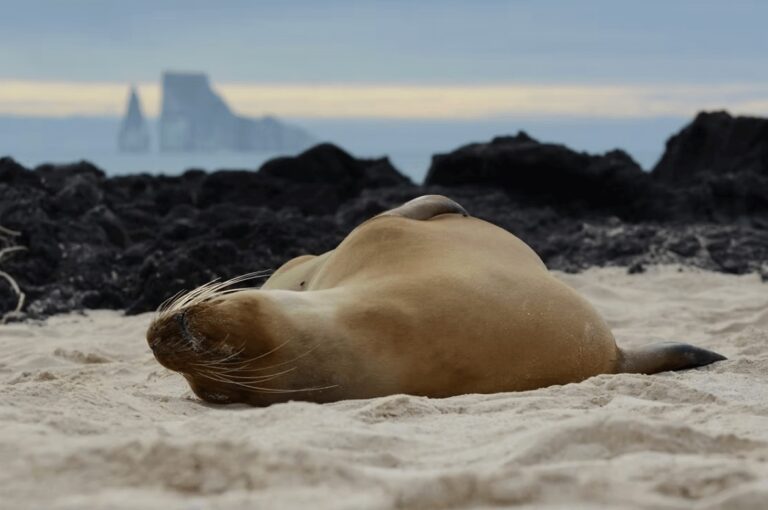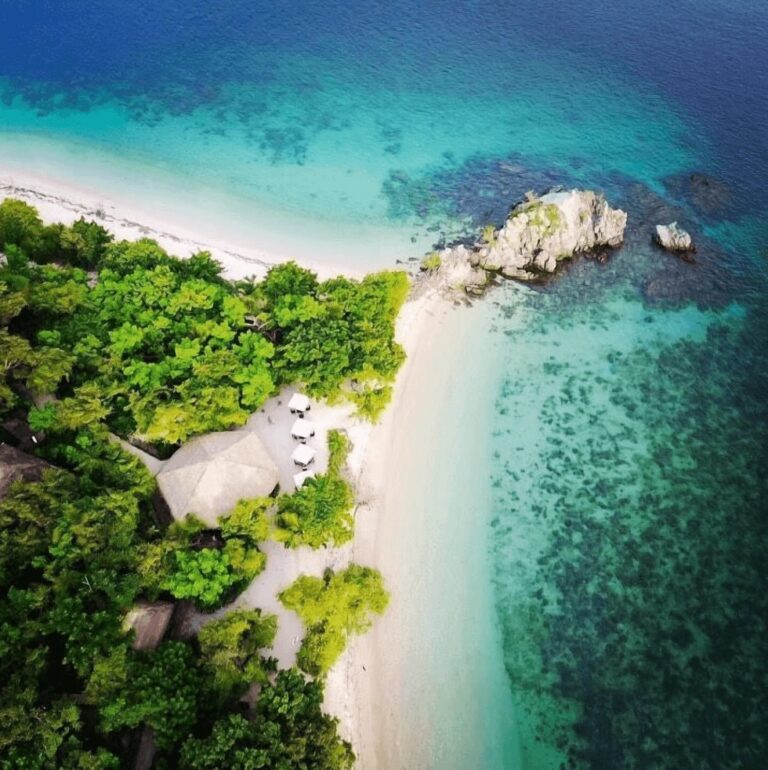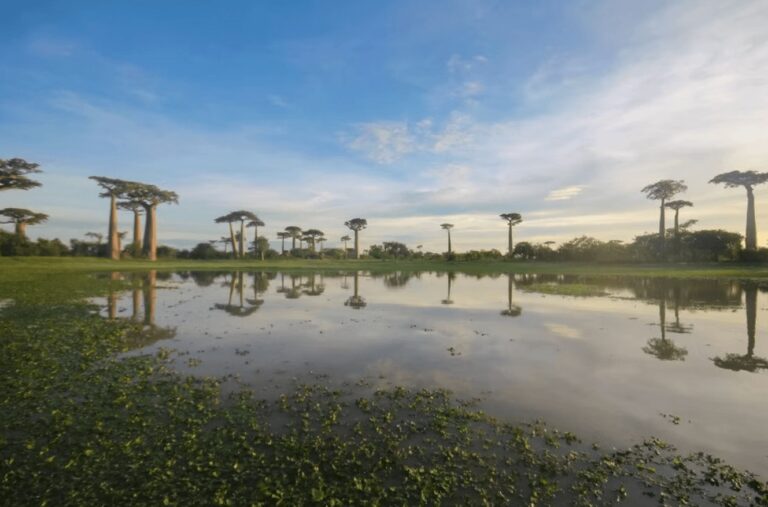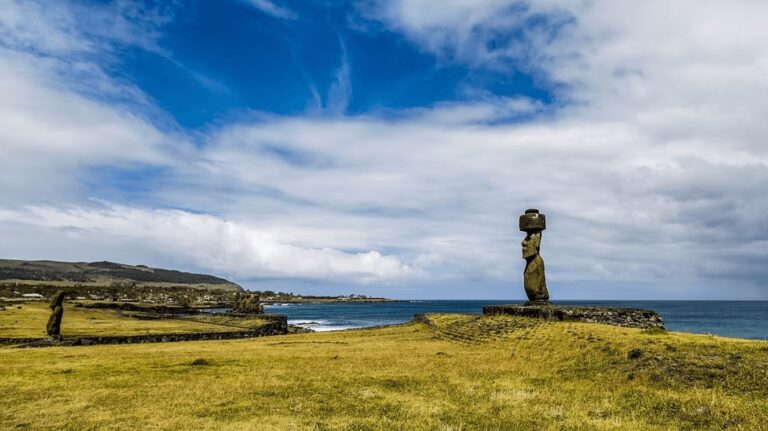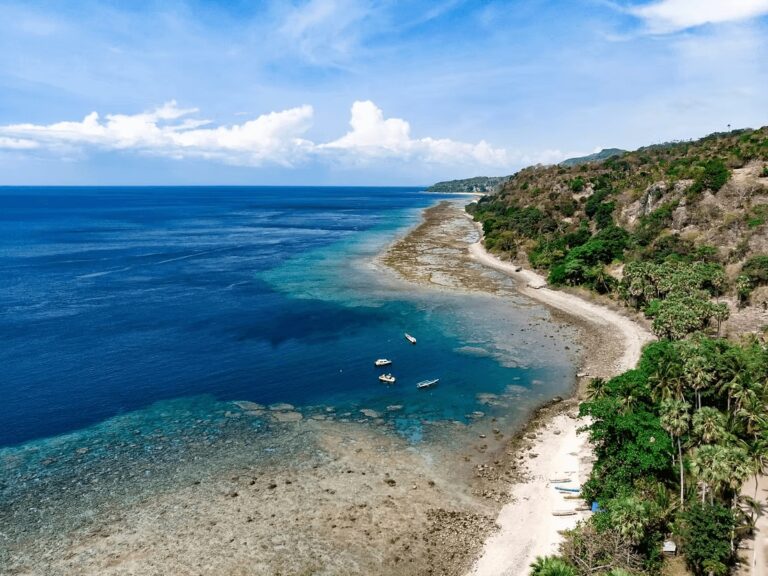Diving in Turks and Caicos: Best dive sites and eco-friendly resorts
Looking for eco-friendly resorts in Turks and Caicos? Discover everything you need to know about diving in Turks and Caicos, including the best dive sites and sustainably-run places to stay.
Positioned southeast of the Bahamas, Turks and Caicos is a slightly more secluded corner of the Caribbean than its more famous northern neighbour.
It comprises over 40 distinct islands and cays, separated into two main groups by the Turks Island Passage. This deep underwater channel serves as a highway for the region’s migratory marine life.
Turks and Caicos is a wonderful destination for divers. It’s home to spectacular walls and seasonal aggregations of nurse sharks that congregate in the nutrient-rich waters.
The archipelago boasts healthy underwater ecosystems and abundant marine biodiversity. Together, they contribute to its reputation as one of the best dive destinations in the Caribbean.
In Turks and Caicos, the concept of sustainability is not just a trend but a fundamental matter of survival. The islands have grappled with the realities of resource scarcity for centuries, with inhabitants making the most of the limited natural assets available to them.
In response, this Caribbean dive destination has largely embraced a model of high-end, low-impact tourism. This has helped to maintain a balance between commercial interests and environmental preservation.
Many resorts and tourism operators have proactively implemented their own eco-friendly initiatives and conservation programs. In doing so, they recognise that protecting the islands’ natural assets is not only an ethical imperative, but also essential to the long-term viability of their businesses.
From waste reduction and renewable energy projects to wildlife conservation efforts, the tourism industry in Turks and Caicos has demonstrated a deep commitment to minimising its environmental footprint and it’s something we love to see!
In this guide to diving in Turks and Caicos, discover everything you need to know about planning a sustainable scuba vacation in the archipelago. We’ll share the best places to dive in Turks and Caicos, the ideal time to visit and compare resort-based vacations vs liveboard trips. We’ll also highlight eco-friendly hotels and resorts in Providenciales and Parrot Cay to minimise the environmental footprint during your stay.
Heading to the Caribbean for your next scuba vacation? Discover all of the best places to dive, from Bonaire to the Bahamas and Curaçao.
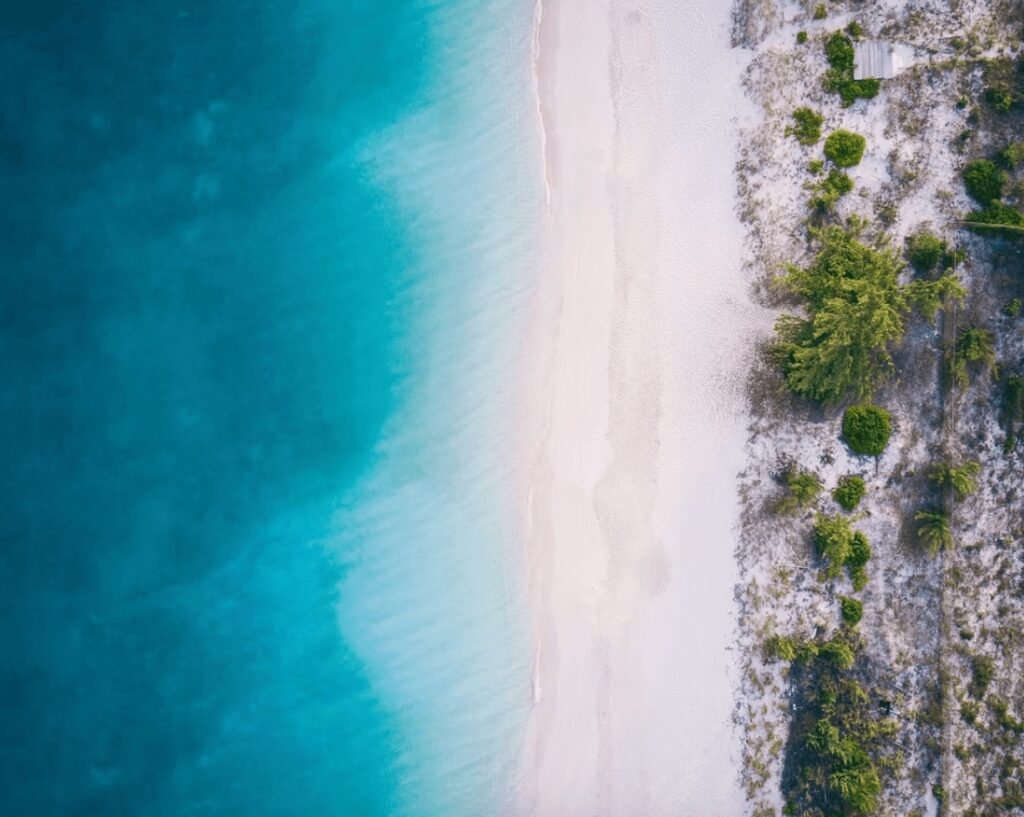
This article contains affiliate links, which means when you make a purchase through that link, we earn a small commission. Affiliate links come at no cost to you and ensure our content remains free!
Best places to dive in Turks and Caicos
Providenciales
Surrounded by captivating dive sites is the island of Providenciales. It’s renowned for its stunning white sand beaches and wide choice of resorts.
Not only is Providenciales a popular destination for scuba divers. It’s also a good base for exploring the western region of this island nation.
While liveaboard itineraries tend to focus on the sites within the Northwest Point Marine Park, the waters surrounding Providenciales are home to a wide array of dive spots, each with something unique to offer.
The dive sites within the marine park showcase dramatic walls and coral reefs adorned with spur and groove patterns. These underwater environments serve as a magnet for large pelagic creatures, including manta rays, dolphins and whale sharks.
During the winter months, you may also be lucky enough to see the breaching of humpback whales as they visit the area to breed and calve.
One of the premier dive sites in the region is Shark Hotel. It offers excellent opportunities to observe Caribbean reef sharks as they patrol the deep blue waters.
Further afield, the Black Forest features an overhang between 20 and 30 metres (70 and 100 feet). It harbours a stunning array of black coral species and healthy gorgonian fans.
Another popular dive site near Providenciales is The Dome. It centres around an artificial reef structure that was once a French television game show prop.
West Caicos
Serving as the focal point for liveaboard cruises in Turks and Caicos, this small island is home to a three-kilometre-long underwater wall. This colourful megastructure is adorned with sponges in all shapes and sizes, from branching antler sponges to purple tube sponges.
The real showstopper is the three-metre-wide orange elephant ear sponge at Elephant Ear Canyon. It’s a deservedly popular subject for underwater photographers.
As the wall gives way to shallower reef flats around 15 metres down, the topography becomes increasingly diverse. Here you’ll find sandy channels that play host to queen conchs, stingrays, barracudas, jacks and turtles.
Sites like Gully and Driveway showcase the full breadth of West Caicos’ underwater wonders. Their deep cuts and overhangs are patrolled by schools of tropical fish.
Other notable West Caicos dive sites like Highway to Heaven and Whiteface offer their own unique highlights. You’ll find everything from fields of garden eels and stingrays to impressive pillar corals and the remnants of a 16th-century Spanish shipwreck.
With such a diverse array of marine life and topographical features, it’s no wonder West Caicos is considered one of the best places to dive in Turks and Caicos.
Want to dive further afield in the Caribbean region? Check out our scuba guides to Belize, Colombia and Honduras.

French Cay
Forming part of the Caicos Banks to the south of Providenciales is the tiny, low-lying island of French Cay. Spanning just 22 acres, it is the sole island in the Turks and Caicos archipelago from which no other island can be seen. The feeling here is one of blissful isolation!
Despite its minuscule size, French Cay packs an ecological punch. Notably, it serves as a protected wildlife sanctuary and home to vast numbers of seabirds.
Flocks of brown noddies, terns and gulls can be observed soaring overhead or perched along the cay’s shoreline. Additionally, the island also functions as a critical breeding and nesting site for sooty terns.
Surrounding the cay, the shallows and reefs of the Caicos Banks have claimed the hulls of several modern shipwrecks. This has given rise to some of Turks and Caicos’ best dive sites.
Thanks to French Cay’s position along the southern wall of this barrier reef, the sun’s rays result in gorgeous lighting. Understandably, the area is particularly popular amongst photographers.
French Cay is perhaps best known as one of the premier shark-spotting destinations in Turks and Caicos. Grey reef sharks are the most commonly sighted. But lucky divers may also catch glimpses of nurse, hammerhead, bull, lemon and even tiger sharks.
Shark sightings are particularly common during the June and July mating season. During these months, large numbers congregate in the shallows on the leeward side of the island.
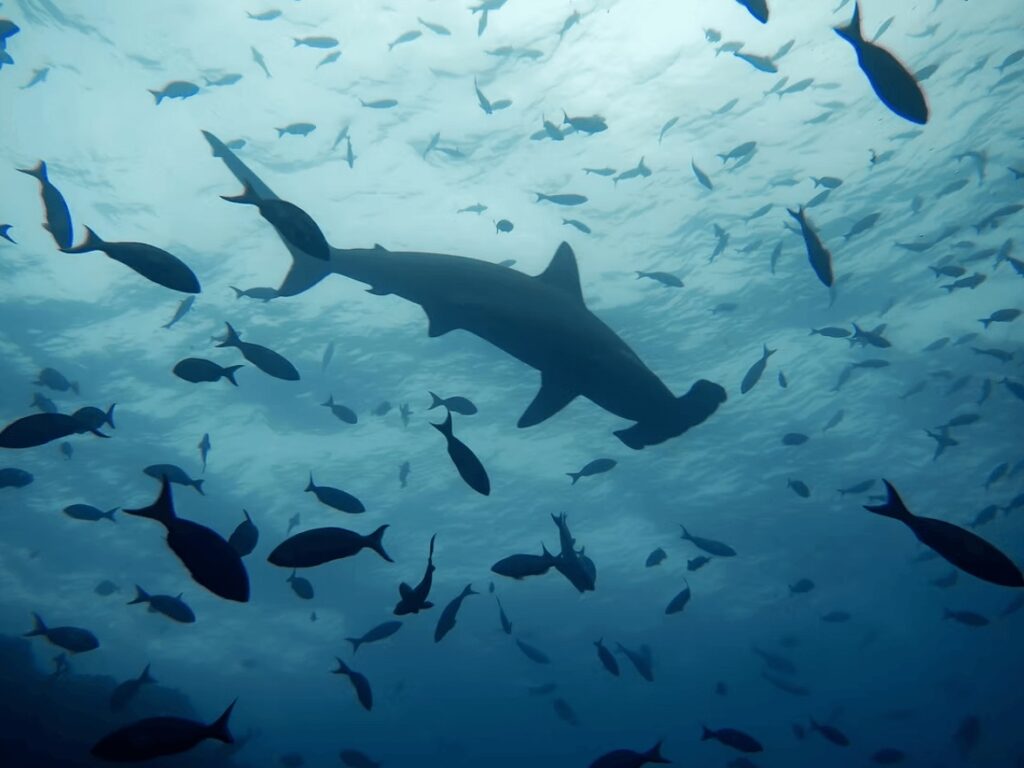
Grand Turk
Centred around a famous wall that runs the length of its leeward side, Grand Turk offers some of the best scuba diving in Turks and Caicos. This dramatic underwater feature begins at depths of just 7 to 10 metres (25 to 30 feet) before plunging precipitously down to over 2,000 metres (7,000 feet).
The Columbus National Marine Park surrounding Grand Turk boasts over 40 distinct dive sites.
Friendly Nassau groupers, garden eels and brilliantly-hued parrotfish are among the regular sightings. You may also encounter schools of electric blue tangs and trumpetfish.
The coral itself is equally impressive. There’s a tremendous variety of healthy hard and soft corals, as well as sponges in various shapes and sizes.
The waters around Grand Turk also harbour larger marine animals like stingrays, eagle rays and both green and hawksbill sea turtles. Meanwhile, both nurse sharks and grey reef sharks can occasionally be spotted.
With its calm, current-free conditions, excellent visibility and warm waters, Grand Turk offers scuba and snorkelling experiences suitable for all skill levels. In our opinion, it is one of the best places to learn to dive in Turks and Caicos.

Salt Cay
The small island of Salt Cay is a prime destination for two of Turks and Caicos’ most popular activities – whale watching and scuba diving. Like many of the other islands in this Caribbean archipelago, Salt Cay’s underwater landscapes are defined by dramatic walls that drop off into the abyss.
The visibility is excellent, often reaching around 30 metres (100 feet). This allows you to really appreciate the healthy coral formations and abundant marine life.
While Salt Cay may not offer the volume of wreck diving sites as Providenciales, it does have a few notable submerged relics worth exploring. The most famous of these is the HMS Endymion. This 44-gun British warship sank on a reef about 20 kilometres (13 miles) south of the island back in 1790.
Although little of the original ship’s structure remains today, the site still holds plenty of interest for divers. There are anchors, chains and other fittings to discover.
Nearby, there is also a more recent wreck from the early 1900s featuring a very early diesel engine, as well as a small fishing boat and a twin-engine airplane.
Salt Cay’s other primary draw is its whale watching opportunities, as it sits in close proximity to the Turks Island Passage. Each year from January to April, humpback whales migrate through this passage on their annual journey from polar feeding grounds to breeding waters.
Many of these majestic cetaceans get funnelled right past Salt Cay. This makes the island an excellent spot for witnessing these incredible marine mammals in their natural habitat.
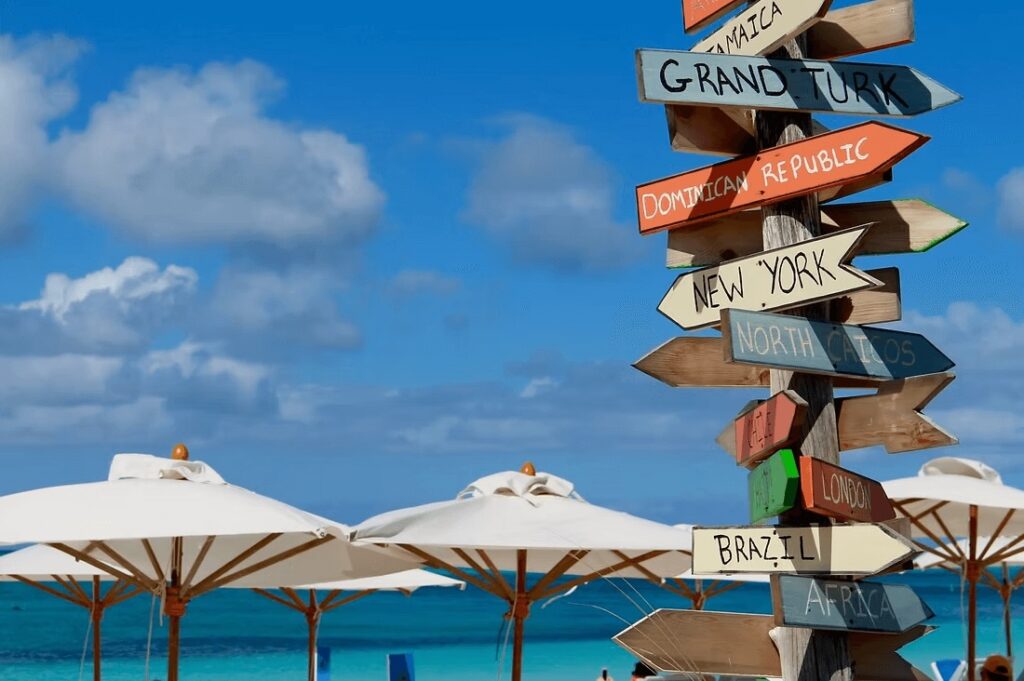
Eco-friendly resorts in Turks and Caicos
Beach Enclave
Best eco-hotel in Turks and Caicos for groups of divers
This stunning collection of upscale beach houses and villas in Providenciales has received numerous accolades. Today, it stands as one of the most sustainable resorts in Turks and Caicos.
Beach Enclave is located just steps from Long Bay Beach, with your choice of two, three and four-bedrooms properties. In short, it’s ideal for groups of divers travelling together!
Throughout the building process, the developers made significant efforts to maintain the natural surroundings by thoughtfully relocating and replanting native trees.
The villas themselves are designed to utilise renewable energy. Each is equipped with a solar water heating system and solar-powered pool pumps, minimising the resort’s dependence on conventional electricity.
“This place is second to none. We travel a lot and have been to some incredible places over the years but this was by far my favorite trip.” – Amanda (read more reviews here)
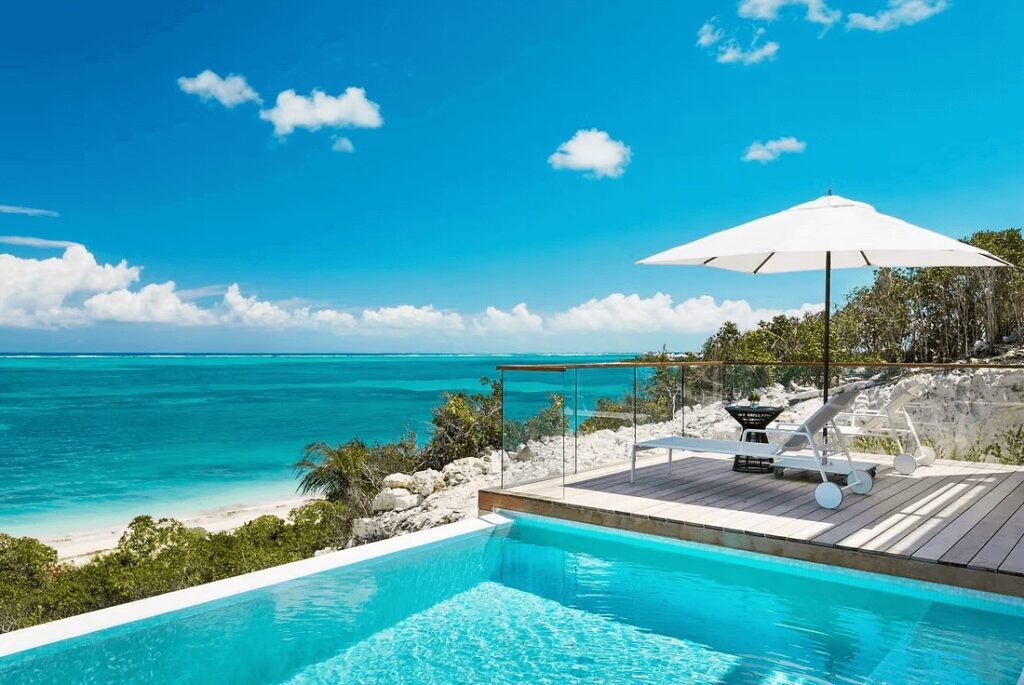
COMO Parrot Cay
Best private island resort in Turks and Caicos for divers
COMO Parrot Cay is a private island getaway that provides visitors with unparalleled luxury and privacy.
This sustainable retreat features a variety of accommodations, from serene beach houses to spacious private villas. Each is crafted with a minimalist and airy design that harmonises beautifully with the natural landscape.
As an eco-friendly Turks and Caicos resort, COMO Parrot Cay is dedicated to safeguarding local biodiversity and minimising its ecological footprint. Around 85% of the island is preserved as protected marine wetlands and mangroves to create habitat for native wildlife.
“Fabulous!” – Debra (read more reviews here)
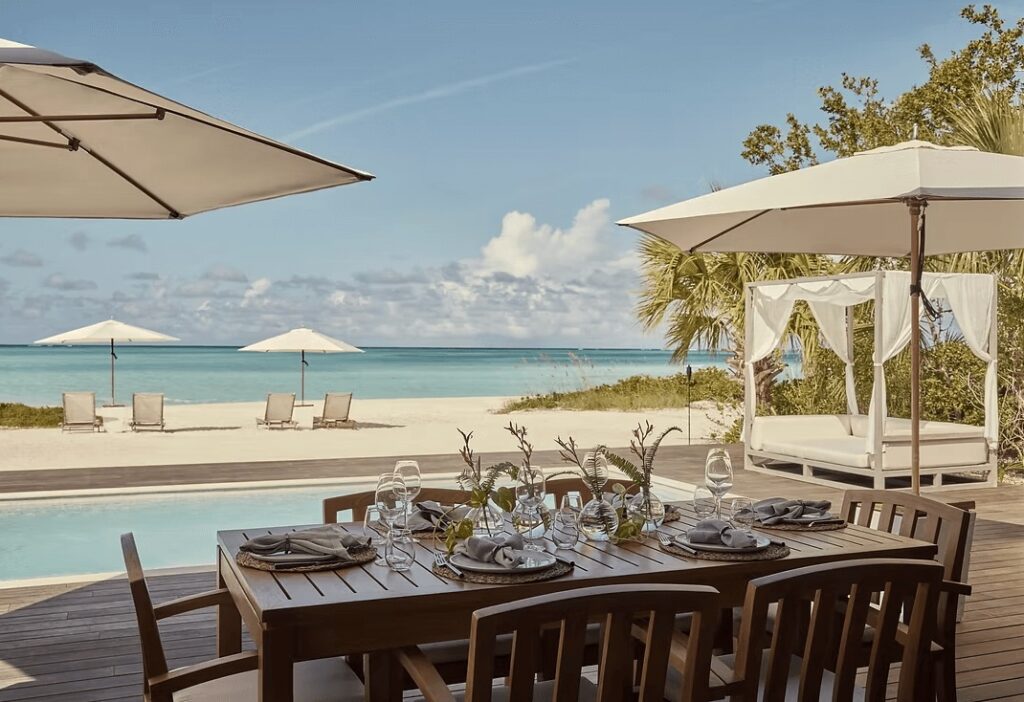
Rock House
Best eco-hotel in Providenciales for divers
Perched on an oceanfront ridge, this highly-rated Providenciales hotel is carved into the limestone cliffs along the island’s north coast.
Its all-white buildings give it a Mediterranean aesthetic while the private beach at the base adds a sense of exclusivity.
Aside from boasting the largest infinity pool on the island, the Rock House is committed to sustainability. From the materials used in its construction to the harvesting of rainwater for irrigation and the planting of native gardens, it’s taking important steps to reduce its environmental footprint.
“One of the best resorts to stay on the entire island!” – Christopher (read more reviews here)
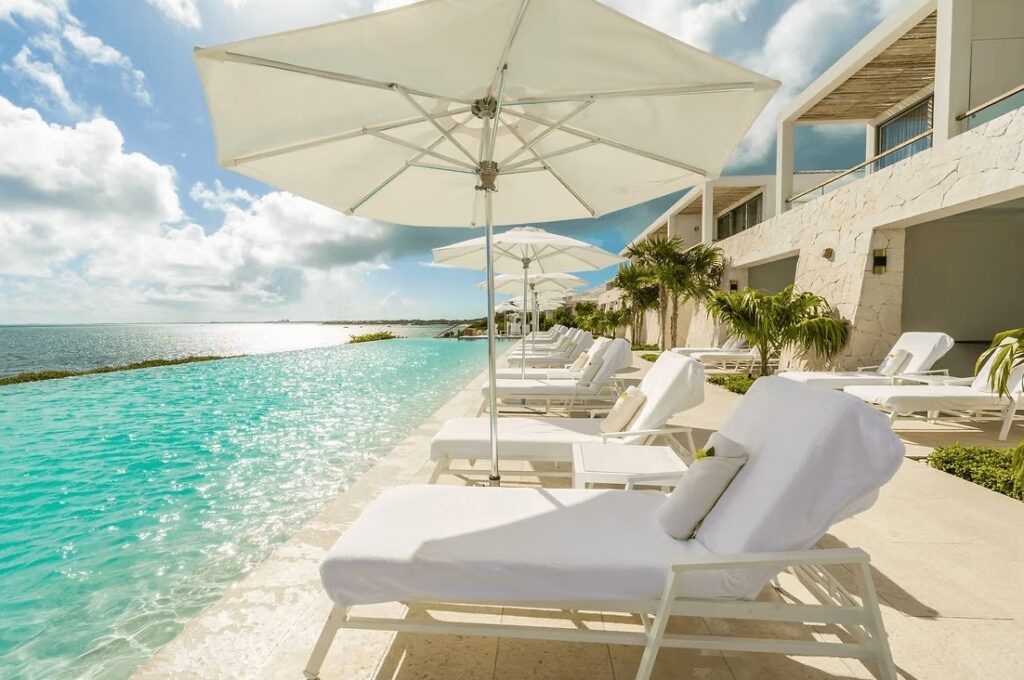
Best time to dive in Turks and Caicos
Turks and Caicos offers year-round diving opportunities. But the peak season is from December through May.
Aside from the excellent underwater conditions during these months, the islands are renowned for their diverse marine life sightings, including humpback whales.
These majestic creatures are frequently spotted passing through the islands on their migration to the Silver Bank in the Dominican Republic. The peak sightings usually occur from January through March.
Throughout the year, the sea temperatures in Turks and Caicos range from around 26°C (79°F) to 29°C (84°F). Most divers are comfortable in a full-length 3mm wetsuit.
In terms of air temperature, the warmest period is July through September, with a maximum of 32°C (90°F). The coolest months are January and February, with average highs of 27°C (81°F).
The rainy season typically runs from September through December. But even then, you can expect pockets of sunshine in between the cloudy conditions. In fact, the islands enjoy around 350 days of sunshine per year!
It’s best to be mindful of the hurricane season, which runs from June to November. September is usually the riskiest month. A highlight of this period is the presence of nurse sharks. They can be observed mating at French Cay from July through September.
FAQs about diving in Turks and Caicos
Is the diving good in Turks and Caicos?
Turks and Caicos is renowned for its world-class scuba diving, offering some of the most breathtaking underwater landscapes in the Caribbean. It’s particularly famed for its wall diving, with towering, coral-encrusted drop-offs that descend hundreds of metres into the abyss.
While scuba diving alongside these dramatic structures, you can expect to encounter everything from sea turtles to schools of fish and various shark species. Humpback whales are also frequently spotted during the winter breeding season.
Additionally, the diving conditions in Turks and Caicos are exceptional. There’s excellent visibility (over 30 metres (100 feet)) and very little current, making it an ideal destination for scuba divers of all skill levels.
When is the diving season in Turks and Caicos?
Turks and Caicos is a fantastic destination for diving all year long. However, the best time to dive Turks and Caicos is generally considered to be from December to May.
The prime time for spotting humpback whales is between January and March when they migrate through the area on their way to the Silver Bank in the Dominican Republic.
The waters temperatures in Turks and Caicos are pleasant throughout the year, ranging from about 26°C (79°F) to 29°C (84°F). A full-length 3mm wetsuit is a comfortable choice for most divers.
Air temperatures peak from July to September, reaching up to 32°C (90°F). January and February are the cooler months, averaging highs of 27°C (81°F).
Typically, the rainy season lasts from September to December. But you can still enjoy sunny breaks amid the clouds. In fact, the islands bask in around 350 days of sunshine each year!
Just keep in mind that hurricane season runs from June to November, with September being the riskiest month. A special treat during this time is the sight of nurse sharks mating at French Cay from July to September.

What is there to see diving in Turks and Caicos?
The reefs surrounding the islands of Turks and Caicos are home to an incredible diversity of marine life. You can see schools of brightly-coloured tropical fish darting between the coral outcroppings, as well as large predators patrolling the deeper waters.
Parrotfish, angelfish and snappers are just a few of the myriad species that can be spotted during a scuba diving trip in Turks and Caicos, together with spiny lobsters, crabs and curious eels peek out from their hiding spots.
Turks and Caicos is particularly known for the abundance of shark species found in its waters. These include Caribbean reef sharks, lemon sharks and distinctive hammerheads.
Divers may even catch a rare glimpse of a manta ray or the powerful, winged forms of spotted eagle rays as they glide over the coral.
During the winter months, the islands become a crucial migratory corridor for humpback whales. These marine mammals can often be spotted breaching the surface or showcasing their impressive tail flukes.
How much experience do you need to dive in Turks and Caicos?
With no prior experience necessary, scuba diving in Turks and Caicos is the perfect place for beginners to get certified. As long as you’re in reasonably good physical health, the exceptional dive operators and instructors in this tropical island paradise will make the certification process a breeze.
For more advanced scuba enthusiasts, there are deep wall dives that will satisfy your need to explore. Most Turks and Caicos dive operators tailor their daily trips to suit the experience level of the group.
Should I stay at a dive resort or on a liveboard in Turks and Caicos?
When deciding between liveaboard diving or resort-based diving in Turks and Caicos, there are several factors to weigh up.
Liveaboard diving is popular with highly experienced scuba enthusiasts and underwater photographers, who want to access some of the more remote dive sites in the Caicos Banks.
On a liveaboard, you’ll be surrounded by like-minded divers. This creates an engaging social environment that can further develop your skills and confidence underwater.
The convenience of having your accommodation, meals and dive operations all in one place on a liveaboard means you can maximise your time in the water, rather than having to commute back and forth from a resort. This is especially valuable for those who want to prioritise diving above all else during their Turks and Caicos vacation.
On the flip side, there is less opportunity for land-based excursions on a liveaboard.
Resort-based diving provides more opportunities to experience the islands’ other natural and cultural attractions when you’re not diving. It’s popular for those travelling with non-diving family and friends.
Resorts also tend to offer a wider range of amenities and activities beyond just diving, whether that’s swimming pools, gyms or spas. When you stay at a Turks and Caicos dive resort, you have a greater choice of restaurants to dine at and more space to relax in between dive excursions.
Ultimately, the decision comes down to your diving experience, your priorities and whether you want to fully focus on scuba experiences or diversify your time in Turks and Caicos
Can you scuba dive on a Turks and Caicos shore excursion?
Turks and Caicos has become a popular destination for cruise ship travellers, many of whom want a taste of the Caribbean’s incredible dive sites during their trip.
Dotting the islands are professional dive shops that cater to divers of all skill levels, from complete beginners to seasoned veterans. Most can tailor dive excursions around cruise ship timetables.
These shops are staffed by highly trained, accredited instructors certified by organisations like PADI (Professional Association of Diving Instructors) and SSI (Scuba Schools International), giving you peace of mind you’re in good hands.
Viator and GetYourGuide are great starting points for finding scuba diving and snorkelling shore excursions in Turks and Caicos, as well as other adventure activities in the islands. Importantly, they allow you to read the reviews of previous participants, helping you make an informed decision as to whether the tour is right for you.
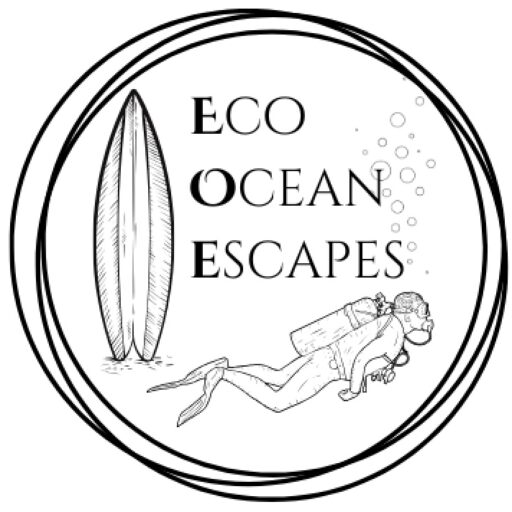
PLAN YOUR TRIP WITH OUR FAVOURITE RESOURCES:
Find hotels and resorts via Booking or Agoda
Book tours and experiences via Viator or GetYourGuide
Find a rental car via Discover Cars
Book flights via Kiwi or Booking
Search for buses and trains via 12Go or Omio
Get travel insurance via SafetyWing
Buy a digital eSIM with Airalo
By purchasing through our links, you’ll be supporting our website at no additional cost to you
About the authors
We are a team of passionate divers and surfers with decades of combined experience in the water and travelling to all corners of the globe. After years of chasing waves and descending into the deep blue, we’ve created this resource to highlight sustainably run surf camps, eco-friendly dive resorts and conservation-focused ocean trips to help inspire your next adventure.
Eco Ocean Escapes was born out of a love of the ocean, an obsession with travel and a concern about the impacts of our adventures on the environments we explore. Despite the benefits that surf and dive tourism can bring to local communities, we recognised that ocean-based adventures are not always managed in a sustainable manner.
Through our articles, we hope to inspire those seeking a responsible surf or dive trip that is all about supporting local communities, preserving our coastal environments and the incredible marine species that inhabit our oceans.
-
Sustainable Surf Tourism and Respecting Local Communities
Surf tourism has exploded over the last two decades. With travel becoming more accessible and social media exposing hidden spots, once-remote breaks in Indonesia, Central America, Morocco and the Pacific Islands are now iconic stops on global surf circuits. While surf travel brings income, jobs and global attention to coastal towns, it can also disrupt…
-
Inspiring Citizen Science Projects for Surfers + How to Get Involved
As surfers, we are intimately connected to the ocean – its rhythms, its wildlife and its health. Because of this relationship, many of us are looking for meaningful ways to protect the marine environments we love. One of the simplest and most impactful ways we can do this is by joining citizen science projects. These…
-
Understanding Marine Protected Areas (MPAs): Why divers should care
If you’ve spent time underwater (as a diver or snorkeller), you’ve probably noticed something: not all sites are beacons of health. Some reefs appear vibrant and full of life, while others show signs of stress – broken coral, few fish or algae-covered rocks. One of the biggest factors shaping the health of our oceans is…
-
Costa Rica: Best Marine Parks for Scuba Divers + Eco Dive Resorts
Costa Rica is a paradise for eco-conscious travellers and underwater explorers are no exception. With its healthy coral reefs, pelagic-rich waters and some of the most progressive environmental policies in the world, the country is a dream destination for those who want to dive responsibly. We’ve been lucky enough to visit Costa Rica several times…
-
Eco-Diving: Best Destinations for Sustainable Scuba Travel
As humans inspired by the underwater world, there is plenty of incentive to protect our coral reefs. Here at EcoOceanEscapes, we want to do our bit to save endangered marine species and keep our oceans free of trash. One impactful action we can all take is to choose sustainable diving destinations. These are nations (or…
-
Eco-Friendly Diving: How to Be a Sustainable Scuba Advocate
Understand the environmental impacts of diving and sustainable scuba practices in this comprehensive guide to eco-friendly diving. Any diver will tell you that being underwater is an incredible experience. It’s a world that not everyone has the opportunity to explore and the encounters we have with marine creatures can be life-changing. Watching manta rays soar…

We are a team of passionate divers and surfers with decades of combined experience in the water and travelling to all corners of the globe.
After years of chasing waves and descending into the deep blue, we’ve created this resource to highlight sustainable surf camps, eco-dive resorts and conservation-focused ocean trips to help inspire your next adventure.
Eco Ocean Escapes was born out of a love of the ocean, an obsession with travel and a concern about the impacts of our adventures on the environments we explore.
